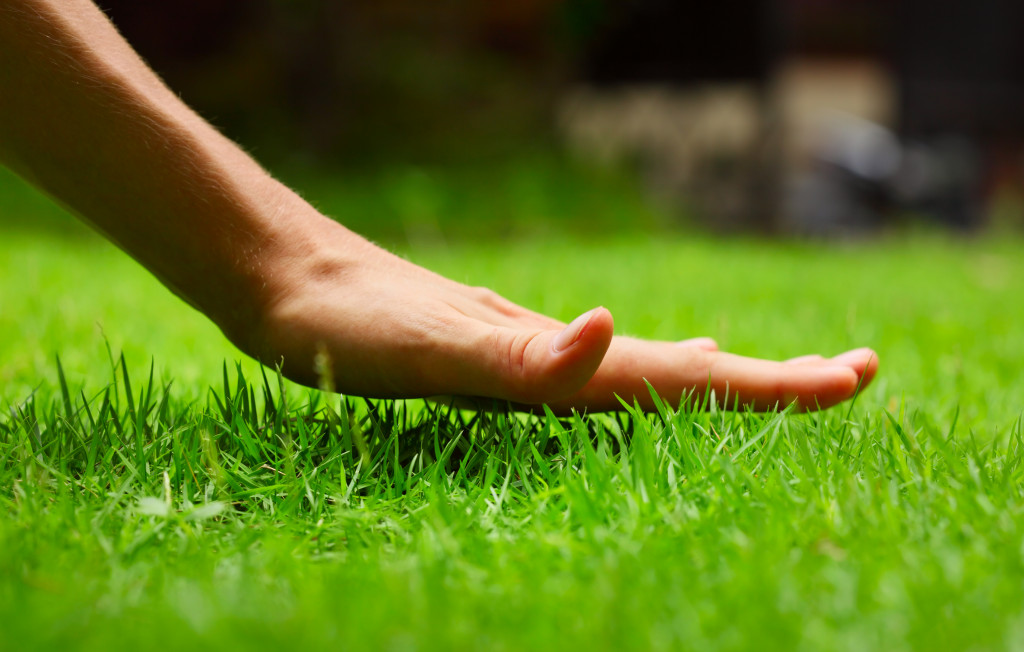A well-kept lawn offers an inviting space for your family and friends to relax. It also provides a safe and healthy place for plants and other microorganisms. It’s not only good for the senses but also beneficial for the environment and even your mental health.
There are lots of simple ways to improve your lawn that don’t require you to spend much. Proper trimming of grass, composting, and using organic fertilizers can help you achieve a healthier lawn for your home.
Follow these tips that can dramatically enhance your lawn:
What To Do For a Healthier Lawn
-
Use natural lawn fertilizers. Natural fertilizers are healthier for the environment, and they work better than synthetic fertilizers. According to Austin’s Watershed Protection and Development Review Department, organic lawn fertilizers result in more attractive lawns than synthetics. There are lots of sources of natural lawn fertilizers, like cottonseed meal, seaweed, and alfalfa.
Cottonseed meal fertilizer features a high organic content which helps in retaining moisture and aerating dense soil. It has a slow release time that makes it safer to use without causing foliage burn. It helps promote healthy greenery and has amazing blooms.
Seaweed-based fertilizers are usually made from kelp, a kind of seaweed that can grow up to 50 meters. They have zinc, nitrogen, potassium, and magnesium which are all beneficial to plants. For instance, nitrogen produces nitrate, an important component for plants during photosynthesis.
-
Keep the grass short. If your grass is too long, it can attract insects and small animals. Keeping it short makes it look more green and even, and also helps in controlling mosquitoes. Shorter grass prevents insects and mosquitoes from breeding.
It’s commonly suggested to remove the top ⅓ of the grass when cutting. It helps make the lawn healthy and you can also use the grass clippings as fertilizer.

-
Aerate your lawn. The soil beneath the grass can become very compacted over time. Compacted soil can cause problems with water drainage, air circulation, and nutrient absorption. Even soil organisms like earthworms can’t help aerate a hard, compacted soil. To make your grass more beautiful and healthier, it’s important to regularly aerate your lawn.
Lawn aeration means putting three-inch deep holes throughout your lawn. Regularly doing it will help your grass grow properly, have better air circulation, and loosen the soil to have the proper amount of water and nutrients. The microorganisms will also help break down build-up thatch.
You can do lawn aeration by renting an aerating machine or using a hand-held aerating tool. Lawn aeration is recommended to be done about once a year.
-
Water your lawn less often. Water your grass deeply and infrequently. This will help the roots of your grass to grow deeper into the soil. It will also make the grass stay green even during hot weather. It’s recommended to water your grass with about one inch of water every week, depending on the soil type, kind of grass, and weather conditions.
You can make sure that you’re watering with one inch of water by placing various containers, then fill them up while measuring one inch in those vessels. This will let you know that you’re watering your grass evenly. If there are varying amounts of water, there’ll be patches of dry grass in the yard.
You can also adjust the sprinkler heads to prevent overwatering the grass. You can test the dryness of the soil by checking if the first 3 to 4 inches are dry to the touch. Use water-absorbing polymers to help your grass retain more moisture.
-
Compost for greener grass. Composting your grass clippings, kitchen, and garden waste is a great way to reduce waste and help your lawn grow beautifully, as well as your garden plants. It also improves water drainage, stimulates root growth, prevents erosion, and attracts beneficial insects.
Composting also helps the soil structure by creating crumbly, textured soil that allows drainage and water retention. It allows the roots to penetrate the surface, which results in a healthy overall structure that allows good air circulation.
It also helps in the retention of nutrients like phosphorus, potassium, and nitrogen, and micronutrients like copper, zinc, and manganese. These nutrients contribute to the overall health of your grass. Unlike commercial fertilizers, compost doesn’t lack essential nutrients and is more environmentally friendly.
Follow these tips for a healthier and greener lawn. It not only improves your property’s aesthetics but also improves flood control and creates a cooling effect in warmer climates. Healthy grass provides oxygen and organic materials for necessary organisms, contributing to a healthy and balanced ecosystem.
